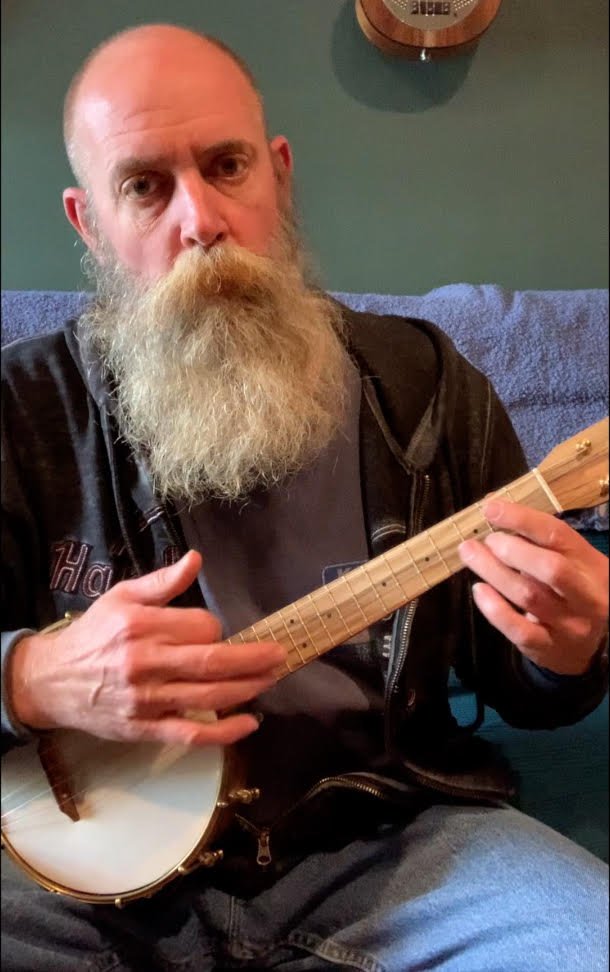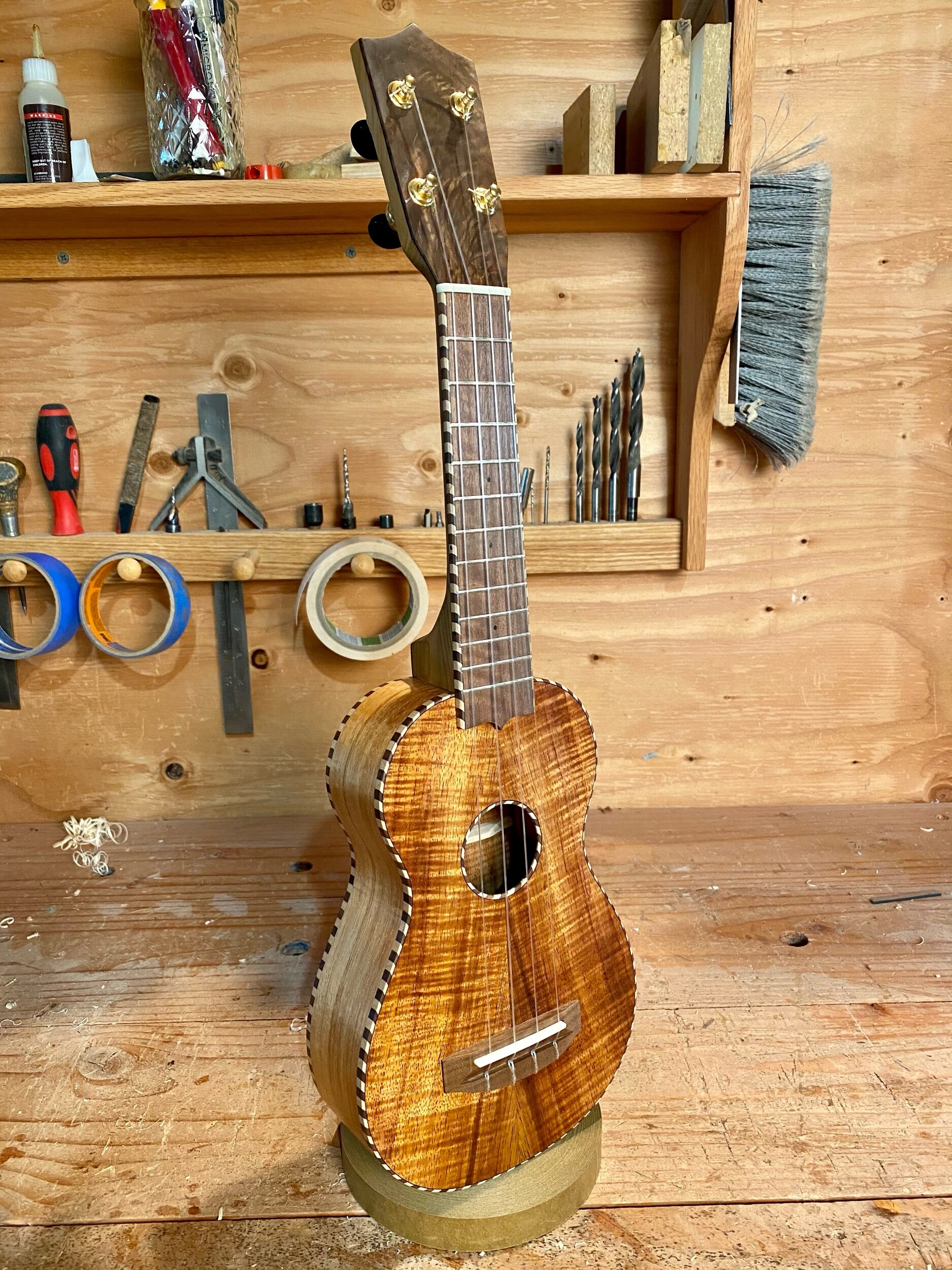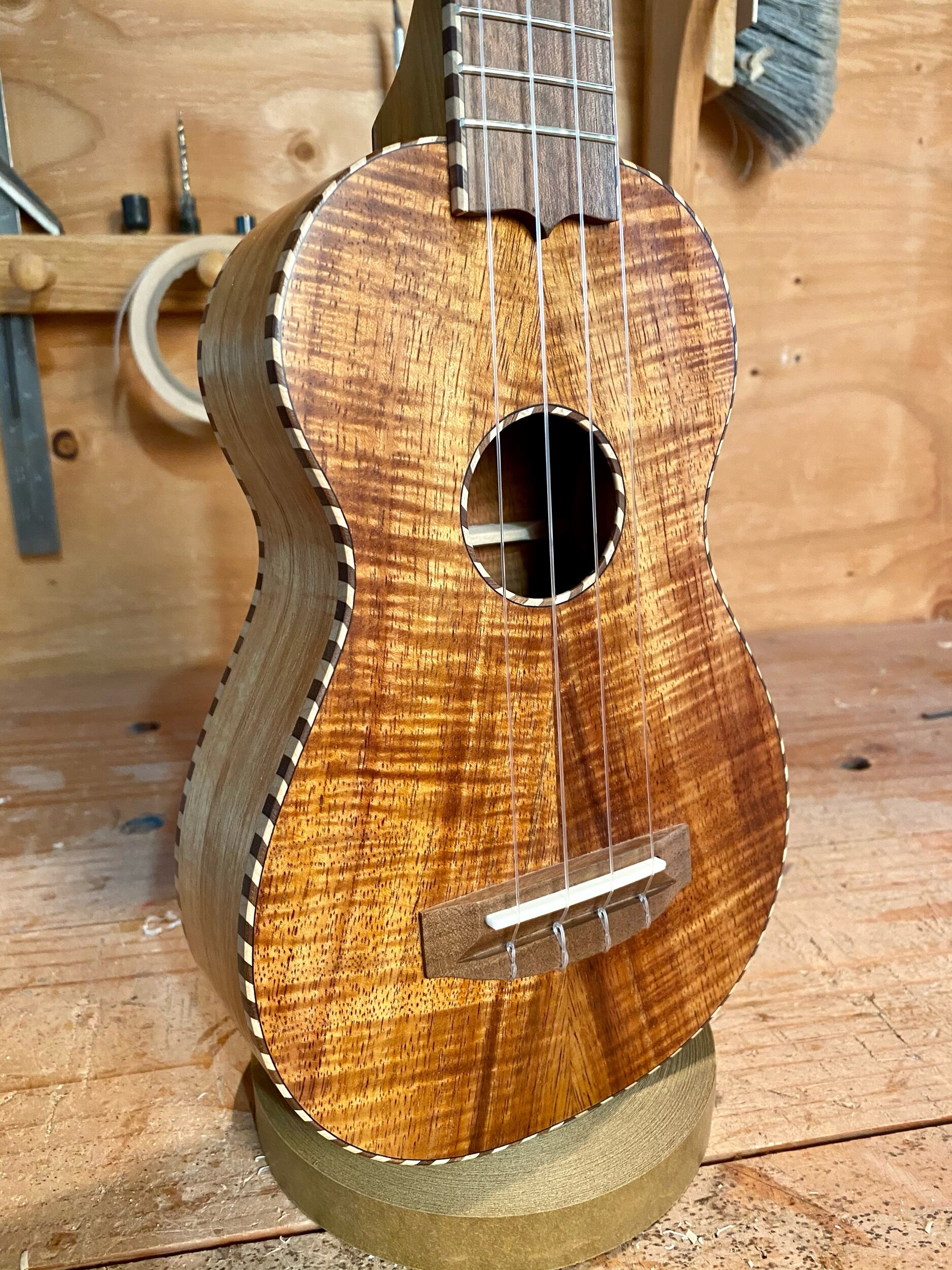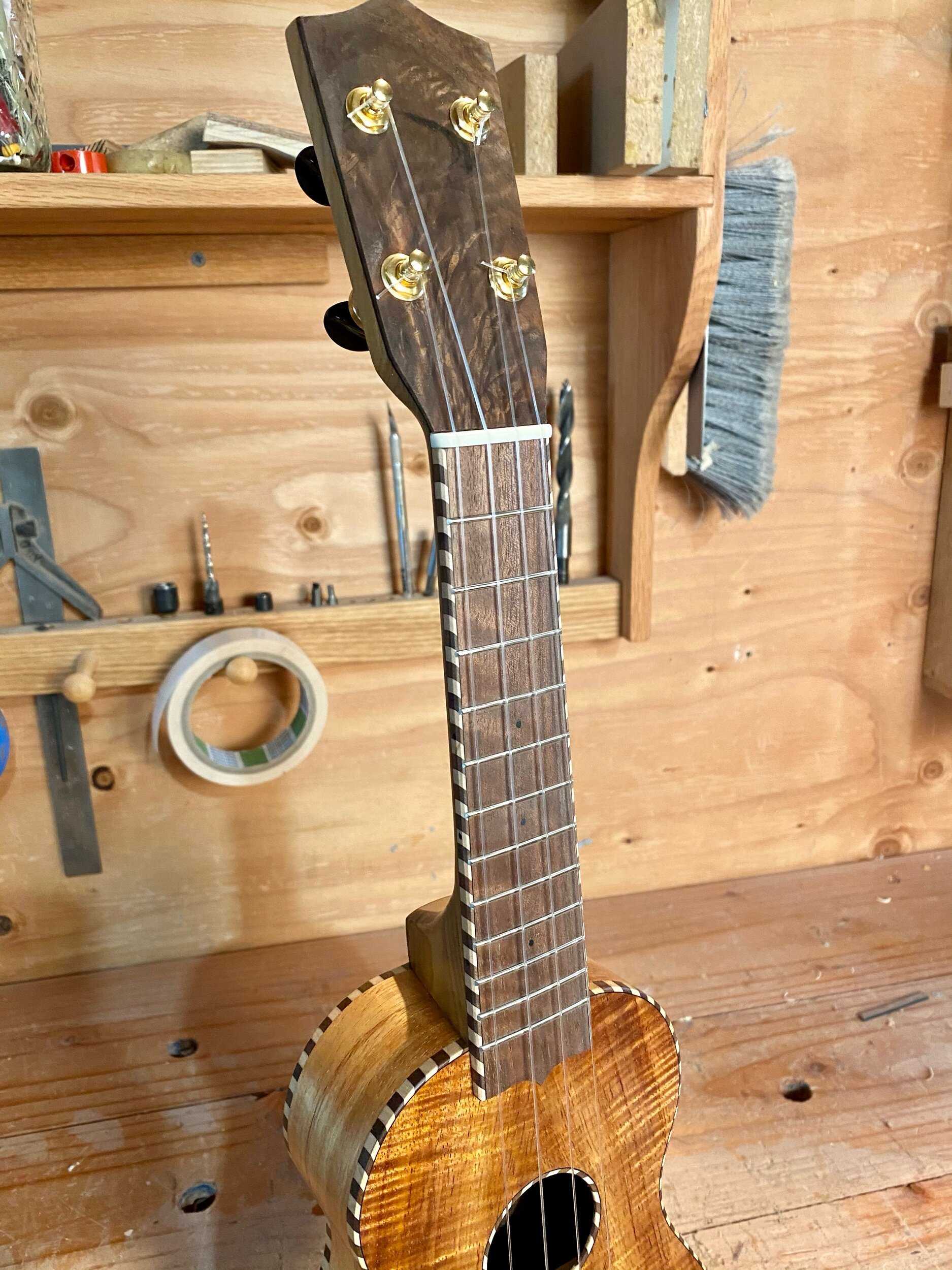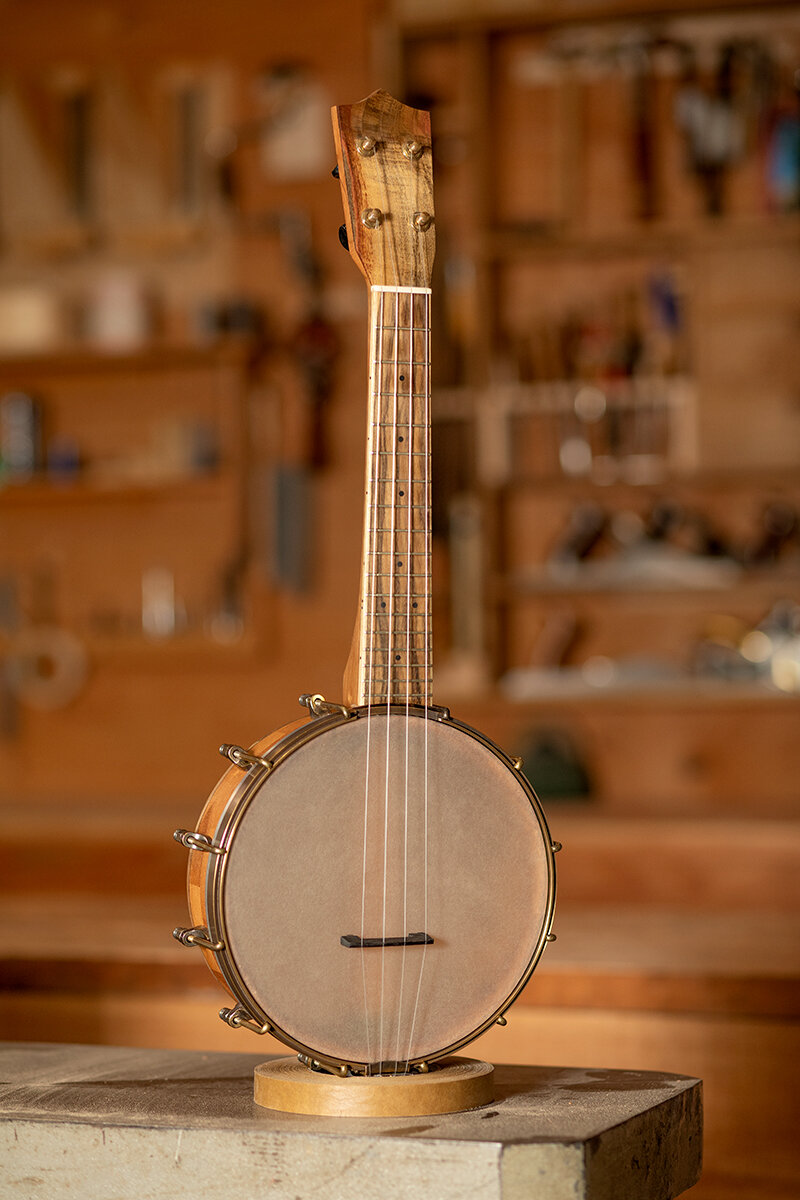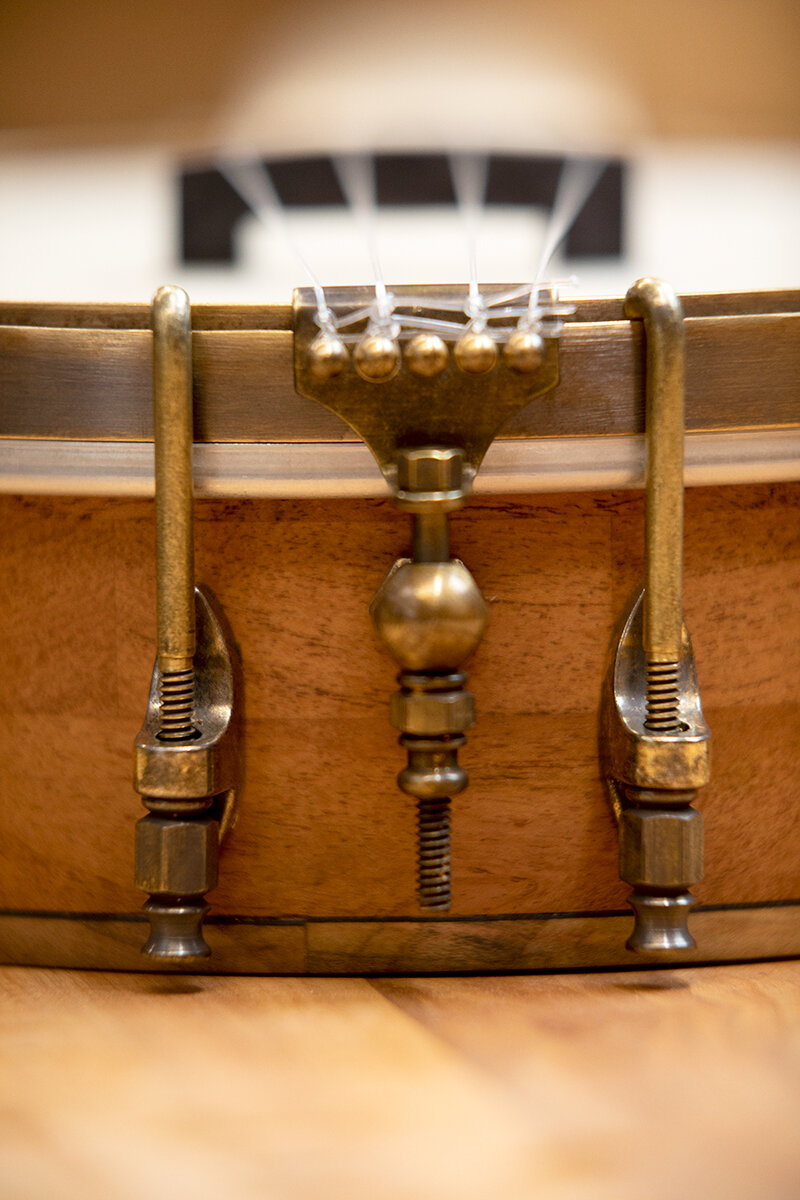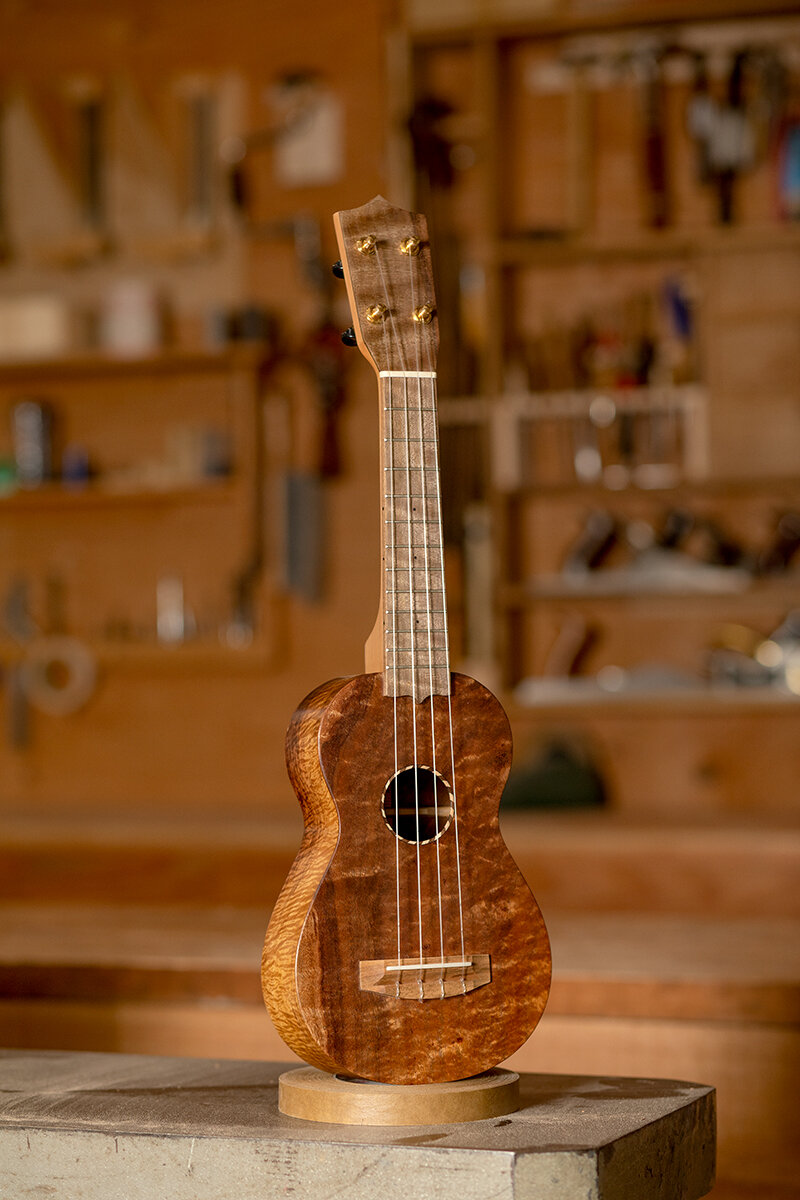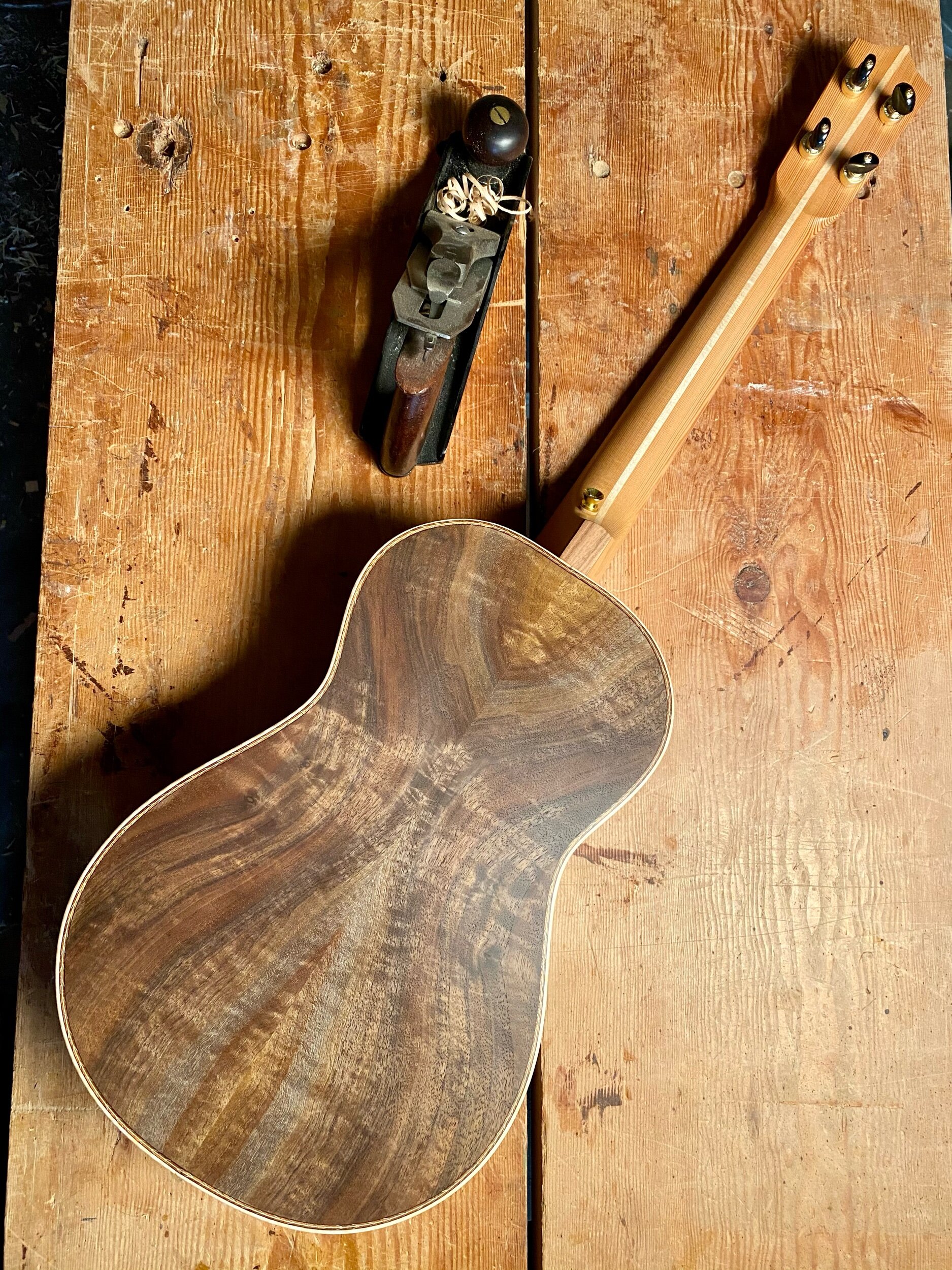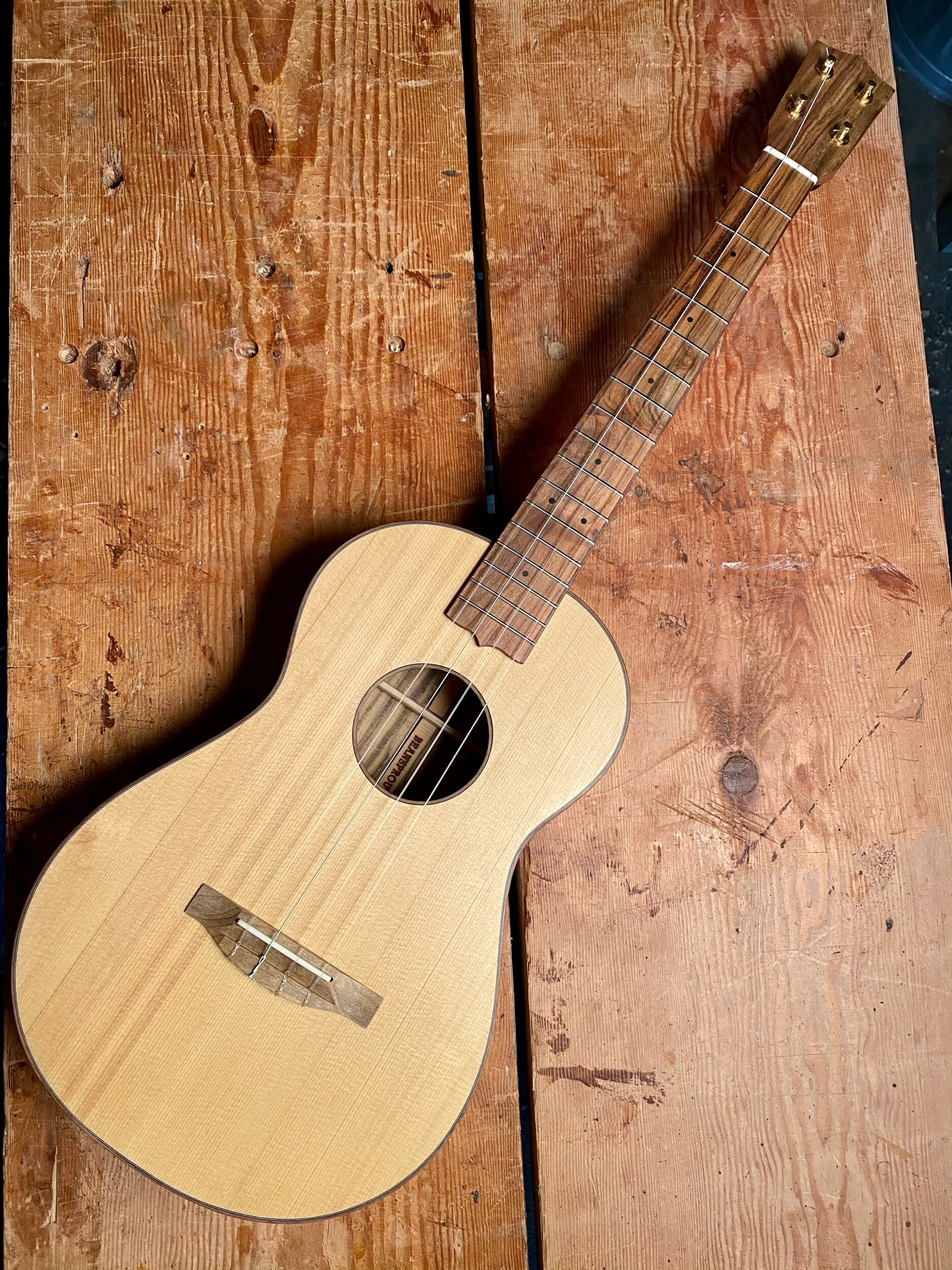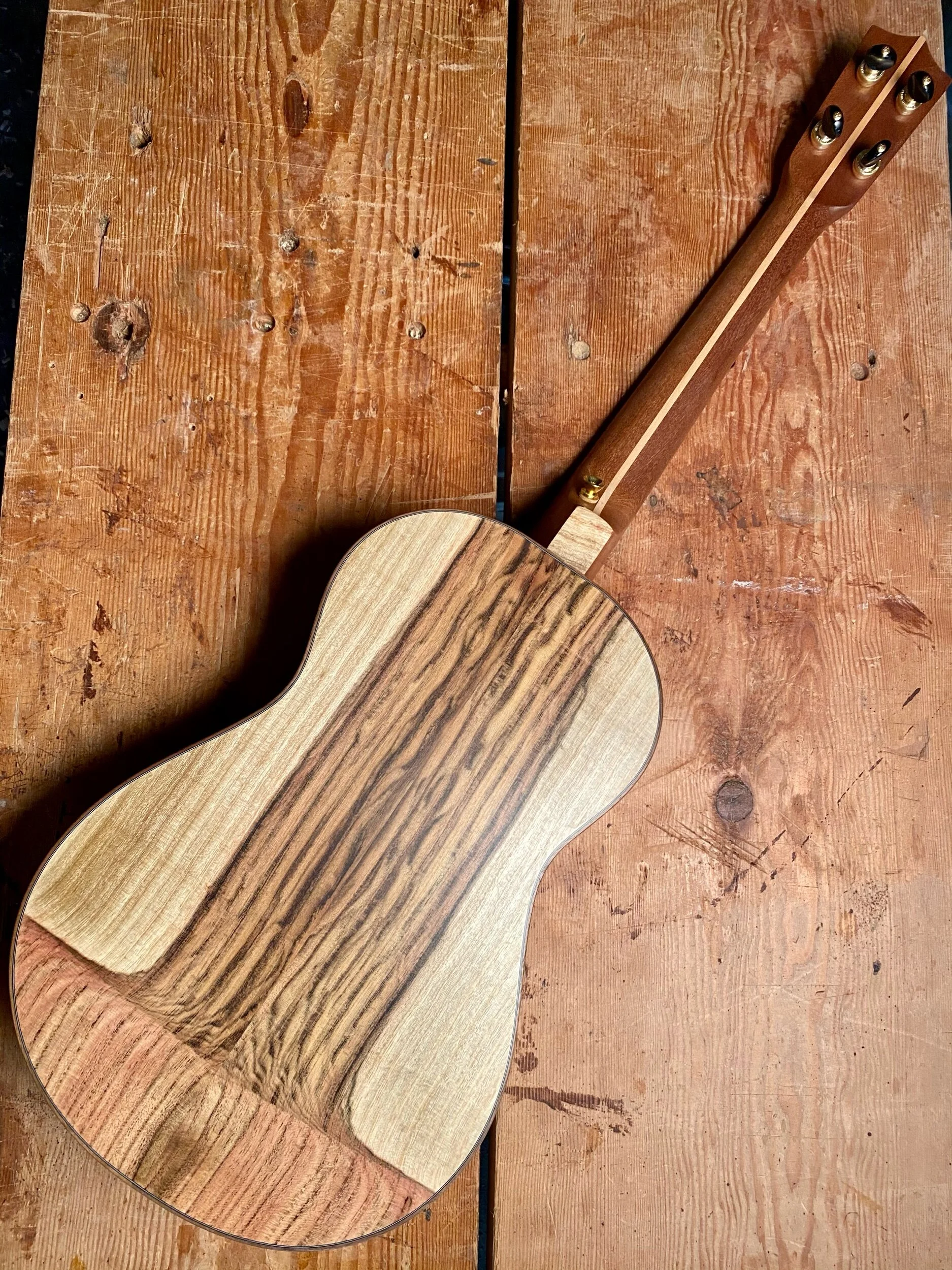Today I offer you another member of the Scout ukulele family: rustic, handmade and one of a kind. This one has a redwood top that I got from Jayson Bowerman, a luthier from Bend, OR. The Myrtle back and sides and the mahogany neck are made from scraps from other ukuleles. The fretboard, headplate and bridge are Jatoba or Brazilian cherry, a very dense hardwood that I salvaged from the Carpenter Ant stash in Portland. This one has a really nice tone, due to the redwood top, I imagine.
““I am so happy I asked to be added to the Scout waiting list! I was hesitant since I knew I would have no choice in the woods used to make the ukulele, but I decided there was little risk after I viewed the completed Scout ukes in the gallery and saw they were all beautiful and sounded fantastic. I own other Beansprouts and have always enjoyed following the progress of my instrument build on social media and was afraid I would miss out on that with a Scout. However it turns out the Scout experience is exciting in its own way! It was fun to see the photos of Scout builds in progress posted to social media and to watch the completed work demo videos and to wonder if that was going to be MY Scout. When I saw the video for this one, I was blown away by how awesome it was and simultaneously disappointed it wasn’t mine since I had not been contacted about it. However, a few hours later I was elated when I received an email from Nicole offering that very Scout uke to me! I had not set my heart on any particular wood combination, but I could not have chosen a better combination if I tried. This is the perfect Scout for me! Aaron often speaks about the concepts of wabi sabi and acceptance and how they are guiding principles in his work. I feel like the process of getting a Scout uke exemplifies these principles and of the Beansprout brand overall. Of course there are no flaws in this ukulele to accept, so I mean that from the perspective of accepting that I did not choose the woods or the build date. By placing my trust entirely in Aaron’s artistic eye and skillful hands and allowing fate to flow I ended up with my dream Scout uke. This ukulele and the experience of getting it is a good reminder to me that sometimes it is best to get out of my own way and see what beautiful things come to me as a result. Thank you for the fantastic ukulele! I always feel so lucky to receive a Beansprout instrument and to feel like I have a tiny part in the Beansprout family.”
- J. L. ”






















